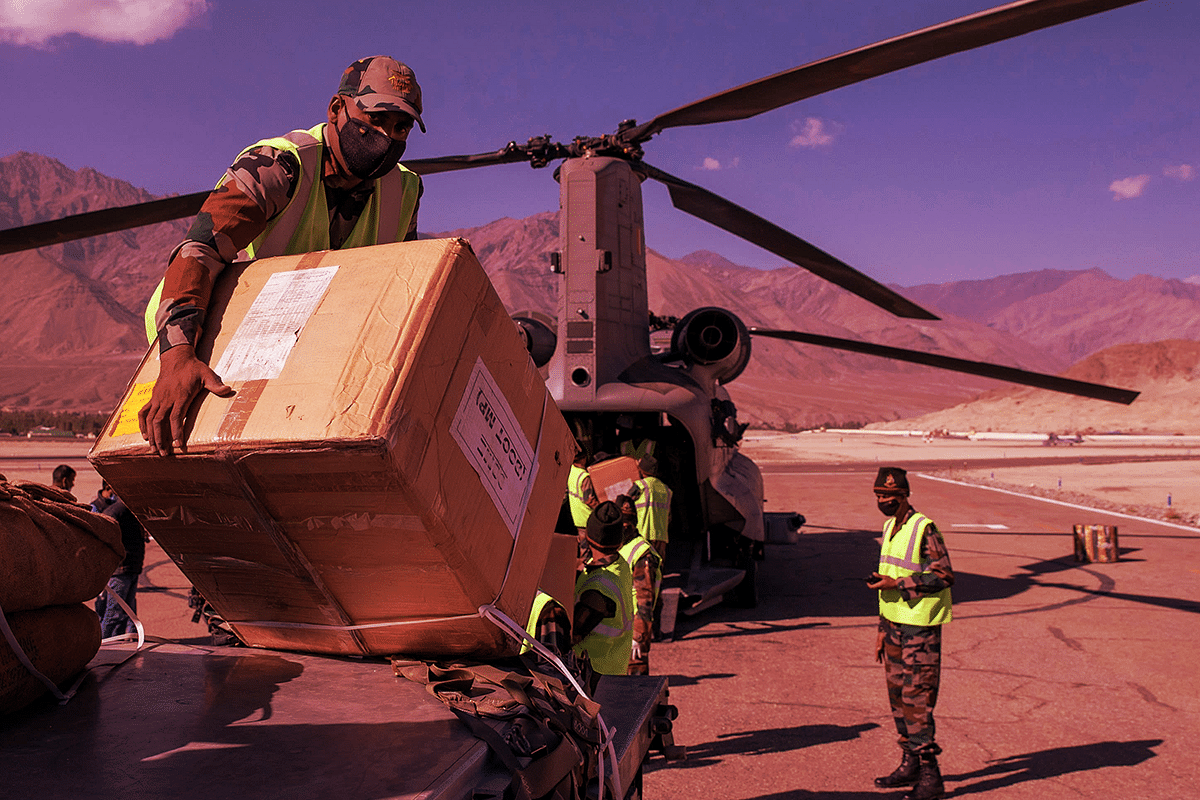Defence
How Joint Efforts Between Army And Air Force Are Helping India Respond Swiftly To Every Chinese Move In Eastern Ladakh
- It was joint planning and coordination between the two services that had ensured swift movement of troops to friction points in eastern Ladakh.

Chinook helicopter of the Indian Air Force.
With no progress towards disengagement and de-escalation between India and China in eastern Ladakh, both sides have been preparing for large-scale winter deployment of forces and equipment in the region for the last few months.
With India carrying out the unprecedented task of stocking supplies for over 50,000 soldiers and transporting equipment to Ladakh without any major hiccup, focus is back on the joint efforts between the Indian Army and the Indian Air Force.
It was joint planning and coordination between the two services that had ensured swift movement of troops to friction points in eastern Ladakh earlier this year when China diverted troops from an exercise in its Xinjiang province and occupied contested territory on the northern bank of the Pangong Lake.
Equipped with the heavy-lift transport aircraft like C-17 Globemaster III, C-130J Super Hercules, Il-76 and AN-32, the Indian Air Force airlifted Indian Army soldiers to Ladakh. This ensured that India had adequate boots on ground.
The IAF also helped the army back up these troops with equipment.
Transport aircraft of the IAF airlifted tanks and armoured personnel carriers to Ladakh.
C-17s are capable of carrying over 70 tonnes (T-90 main battle tanks weighs about 46 tonnes) of equipment or more than 100 fully armed troops in a single sortie.
Smaller transport aircraft of the IAF — turboprop twin-engine Antonov AN-32s and four-engine turboprop C-130s — have been flying to the remotest locations carrying supplies for the troops deployed along the Line of Actual Control.
C-130s, capable of lifting around 20 tonnes, have been flying to Daulat Beg Oldi, the world’s highest airfield (at 16,600 feet), during the current crisis.
When supplies land at bases in Ladakh, IAF’s Chinooks airlift it to frontline troops posted at forward locations. Reaching these places by road is either impossible or takes hours of driving, making supply by road difficult.
“As soon as we reached close to the LAC to witness tank maneuvers, we could see the Chinook and Mi-17V5s helicopters of the Air Force flying towards an Advanced Landing Ground to drop supplies including panels of shelters which are being erected in the border areas,” journalist Manjeet Singh Negi is quoted as saying in this India Today report.
The US-built Chinooks of the IAF are capable of lifting around 11 tonnes or 45 troops, and can also carry underslung payloads like the M777 ultra-light howitzer, a 155 mm artillery gun inducted for use along the China front.
“The instructions from the top at Air Headquarters are clear that whatever requirements are projected by the Army and other security forces have to be fulfilled. The results are here for everybody to see,” a senior IAF officer has said.
The joint effort isn’t limited to the transport supplies and equipment.
The IAF has deployed its fighter jets, combat helicopters, including the newly-inducted Apaches, at its air bases in the region.
“The Chinooks are supplying men and material to the border areas on a daily basis while the Apaches would come into the picture in a big way if the two sides get engaged in a tank battle in the high altitude wide valleys of the Indus and other rivers in the Eastern Ladakh sector,” the IAF official said.
Support Swarajya's 50 Ground Reports Project & Sponsor A Story
Every general election Swarajya does a 50 ground reports project.
Aimed only at serious readers and those who appreciate the nuances of political undercurrents, the project provides a sense of India's electoral landscape. As you know, these reports are produced after considerable investment of travel, time and effort on the ground.
This time too we've kicked off the project in style and have covered over 30 constituencies already. If you're someone who appreciates such work and have enjoyed our coverage please consider sponsoring a ground report for just Rs 2999 to Rs 19,999 - it goes a long way in helping us produce more quality reportage.
You can also back this project by becoming a subscriber for as little as Rs 999 - so do click on this links and choose a plan that suits you and back us.
Click below to contribute.
Latest